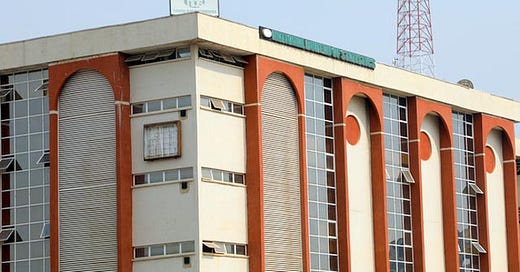Q1:2024 CIT & VAT Report: FG on Track to Beat Budget Expectations Despite Macro Headwinds
An Extraction of the Afrinvest Weekly Economic & Market Report for June 24th, 2024
Photo Credit: NBS
This week, we focus on the recently published Company Income Tax (CIT) and Value Added Tax (VAT) data for Q1:2024. The CIT and VAT data are pivotal for gauging performance of critical non-oil revenue components against budgeted benchmarks. As of Q1, gross CIT realised declined by 12.9% to ₦984.6 while VAT rose 19.2% q/q to ₦435.7bn. On an annual basis, both incomes rose 109.9% and 101.7% respectively.
Despite strong y/y growth in CIT owing to weak Q1:2023 base (election and cash crunch), the unimpressive q/q performance highlights the impact of tight corporate operating environment and partial effect of seasonal trends. For clarity, foreign CIT payment (60.7% of total) recorded an uptick of 0.3% q/q while local CIT declined by 27.6%. The growth contraction of CIT in sectors such as Manufacturing (11.2% of domestic CIT), ICT (12.6%), Construction (2.8%), Transportation & Storage (3.3%) and Trade (4.2%) by 70.2%, 6.9%, 33.1%, 45.5% and 39.7% q/q respectively mirrors the q/q GDP growth pattern earlier reported by the NBS. Thus, we attribute the decline in CIT to deteriorating macroeconomic indices including the impact of inflation and FX risks on bottom-line – these factors which worsened seasonal trend of slowdown in CIT in first quarters.
Meanwhile, the uptrend in gross VAT revenue was driven by growth across the board as Non-Import VAT (Local), Non-Import (foreign) and NCS-Import VAT (Nigerian Customs Service) rose 5.3%, 33.6% and 36.1% q/q to ₦663.2bn, ₦435.7bn, and ₦332.0bn respectively. On an annual basis the respective components advanced 52.1%, 188.3% and 171.3%. Excluding financial services on the home front, the top-contributing sectors include Manufacturing (26.7% share), Mining (15.4%), Accommodation and Food Service (1.7%), Administration (1.5%), Trade (6.7%), and Transportation & Storage (3.6%) each with respective q/q growths of 11.5%, 7.7%, 59.2%, 47.8%, 7.1% and 7.2%. This increase in VAT revenue, which is a fixed-percentage tax on prices of consumption, could be reflective of higher price adjustment on goods and services amid elated inflation. This perspective is supported by the broad deceleration of real GDP – a measure of output – on a q/q basis in Q1.
Based on Finance Act 2020 provisions that caps cost of collections at not more than 50% of the collected amount, we estimate minimum CIT (gross CIT less collection cost) at ₦492.3bn for Q1:2024. Compared to FG’s target of ₦1.5tn, CIT at current performance rate could overshoot FY budget by as much as 33.7%. However, adjusting VAT collected for the maximum collection cost of 50.0% and FG’s 15.0% share of net, annualized VAT for FG could miss target (₦512.8bn) by 16.3%. Nonetheless, the combination of the non-oil taxes could result in 20.8% budget overperformance by year-end. The implication is positive for non-oil tax target of ₦3.5tn for the current fiscal year. Overall, strong non-oil revenues would provide some cushion for negative shocks to oil revenue projections which appear ambitious given oil market conditions and domestic output levels.
Granted that there are significant upsides of outperforming tax revenue for fiscal performance, it is imperative to highlight that growing tax revenue should employ a balanced perspective. The present macroeconomic landscape, which is largely affecting corporate performance negatively, and stoking a wave of exit by multinationals could have negative effect on future realisable taxes if unchecked, thus fiscal and monetary authorities need to intensify efforts towards creating a conducive operating environment.
Chart 1: CIT and VAT Trend Against Targets

Source: NBS, MTEF, Afrinvest Research



